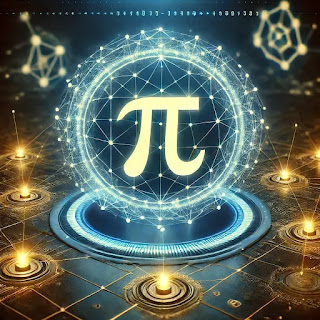In the ever-evolving world of cryptocurrencies, Pi Coin has emerged as a unique and intriguing player. Launched in 2019 by a team of Stanford graduates, Pi Coin aims to make cryptocurrency mining accessible to everyone, even those without technical expertise or expensive hardware. Unlike Bitcoin or Ethereum, which require significant computational power and energy consumption, Pi Coin can be mined using a smartphone. But what exactly is Pi Coin, and does it have the potential to revolutionize the digital currency landscape?
What is Pi Coin?
Pi Coin is a cryptocurrency project developed by the Pi Network, led by Stanford University graduates Dr. Nicolas Kokkalis and Dr. Chengdiao Fan. The project’s core mission is to create a decentralized digital currency that is accessible to the average person. Pi Network leverages a unique consensus algorithm known as the Stellar Consensus Protocol (SCP), which allows users to mine Pi Coins without the need for energy-intensive hardware.
How Does Pi Coin Work?
Pi Coin mining is designed to be user-friendly and energy-efficient. Here’s how it operates:
-
Mobile Mining: Unlike traditional cryptocurrencies that require powerful computers, Pi Coin can be mined using a smartphone. Users simply download the Pi Network app, create an account, and start mining by tapping a button once every 24 hours.
-
Security Circles: To enhance security and prevent fraudulent activities, Pi Network employs a system called "Security Circles." Users form circles with trusted friends and family members, which helps validate transactions and maintain the network’s integrity.
-
Decentralization Goals: Currently, Pi Network is in a centralized phase, with the development team overseeing operations. However, the long-term objective is to transition to a fully decentralized blockchain, empowering the community to govern the network.
The Vision Behind Pi Coin
The Pi Network envisions a future where digital currency is as accessible and widely used as traditional fiat currency. By making mining simple and energy-efficient, Pi Coin seeks to democratize cryptocurrency participation, allowing individuals from all backgrounds to engage in the digital economy.
The team behind Pi Coin believes that the current cryptocurrency landscape is monopolized by a small group of tech-savvy individuals and large-scale mining operations. In contrast, Pi Coin aspires to create a more inclusive financial ecosystem where anyone with a smartphone can contribute to and benefit from the network.
Challenges and Criticisms
While Pi Coin’s vision is ambitious, it has encountered skepticism and criticism. Some key concerns include:
-
Lack of Transparency: As of now, Pi Coin is not listed on major cryptocurrency exchanges, and its value remains speculative. This opacity has led some to question the project's legitimacy.
-
Centralization Issues: Pi Network is currently highly centralized, with the development team controlling the currency. Critics argue that achieving full decentralization is crucial for its long-term success.
-
Utility and Adoption: For Pi Coin to establish real value, it must be widely adopted for transactions. However, the network is still in its early stages, and whether it will gain traction in the broader cryptocurrency market remains uncertain.
The Road Ahead
The Pi Network has ambitious plans for the future. The development team is actively working on transitioning Pi Coin to a fully decentralized blockchain, which would enable public trading. Additionally, Pi Network is exploring various use cases, including peer-to-peer transactions, smart contracts, and decentralized applications (dApps).
The success of Pi Coin will largely depend on its ability to build a strong and active community, achieve widespread adoption, and deliver on its promise of creating a truly decentralized and accessible digital currency.
Conclusion
Pi Coin presents an innovative approach to cryptocurrency mining, making it more inclusive and accessible. While the project remains in its developmental stages and faces significant challenges, it has the potential to disrupt the traditional cryptocurrency landscape. Whether Pi Coin evolves into a mainstream digital currency or remains a niche project is yet to be seen. However, its focus on inclusivity and accessibility makes it an intriguing development in the world of cryptocurrencies.
As with any investment, potential users should exercise caution and conduct thorough research before engaging with Pi Coin or any cryptocurrency project. The future of Pi Coin is uncertain, but its vision of a more inclusive digital economy is undoubtedly compelling.


Comments
Post a Comment